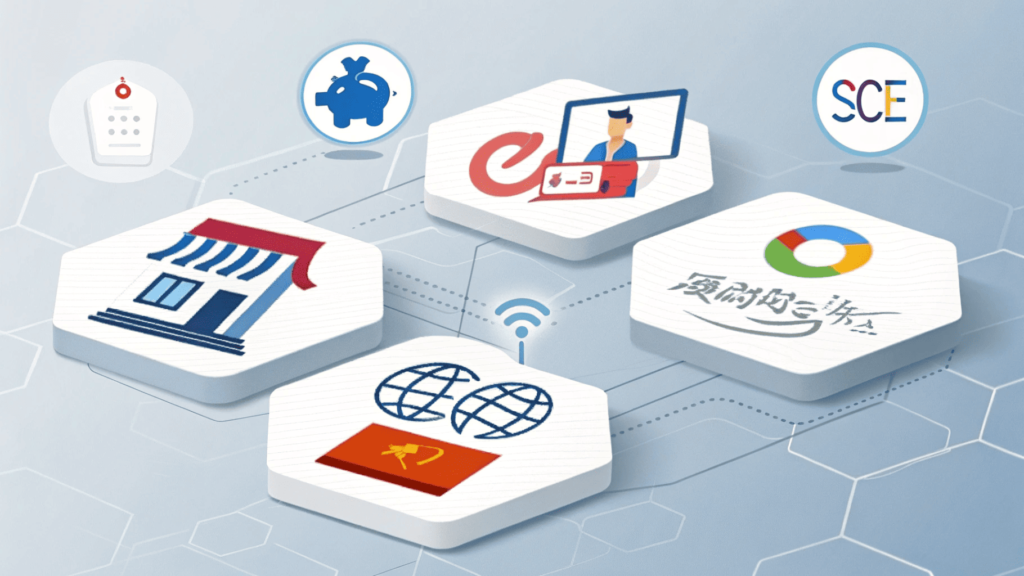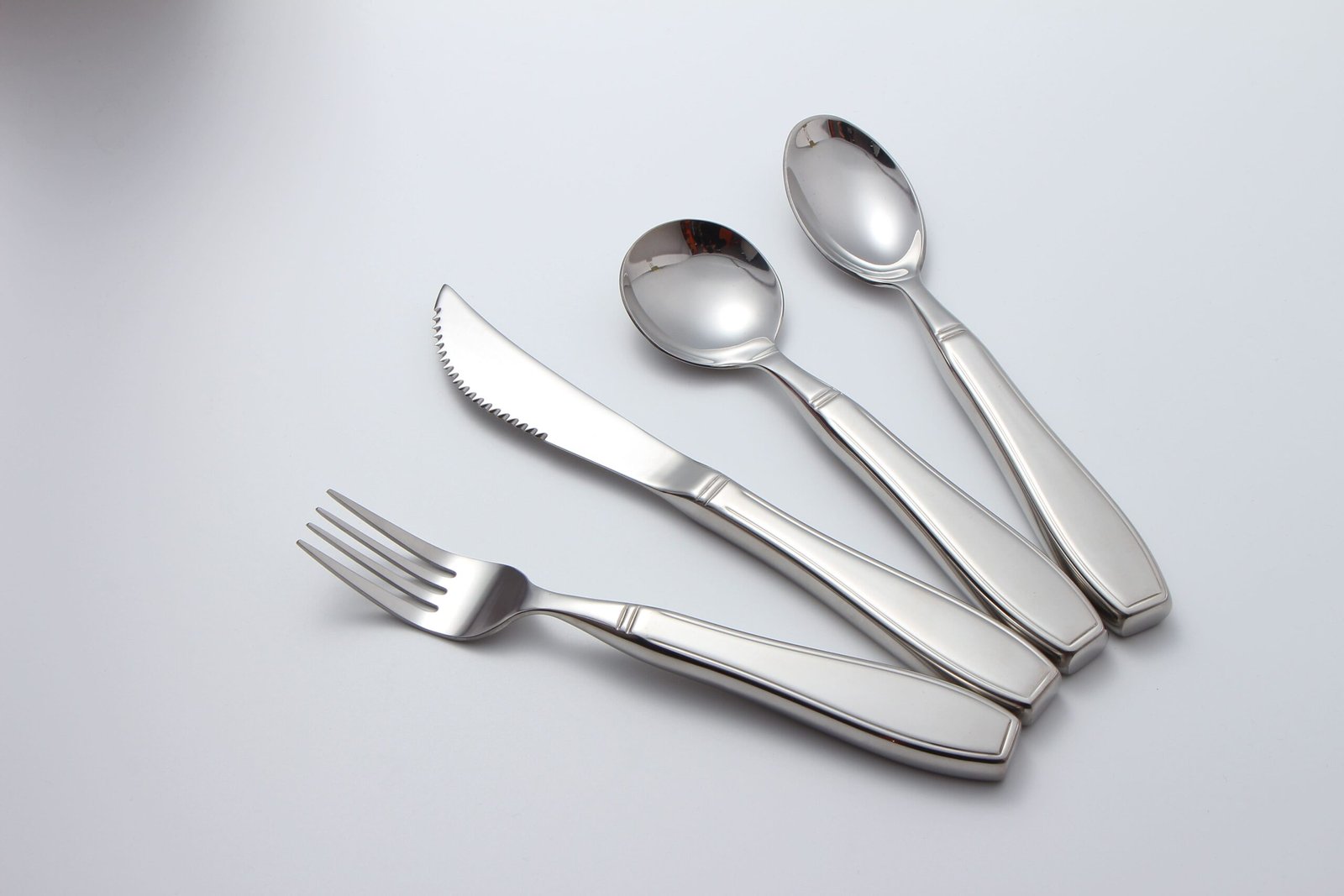Finding reliable and cost-effective manufacturing partners can feel overwhelming—especially when competitors seem always a step ahead.
Working with a Chinese ODM cutlery manufacturer offers access to cost-efficient, high-quality designs, innovative production technologies, and quick scalability, giving your brand significant market advantages.
You may wonder how partnering with a Chinese ODM specifically boosts your competitive edge. I’ll explain exactly how through several practical points below, keeping your interest as we explore together.
Table of Contents
How Does ODM Manufacturing in China Cut Production Costs?
Manufacturing costs can cripple your profits and restrict market competitiveness if they’re too high, leaving you lagging behind more agile competitors.
ODM manufacturing in China significantly reduces production costs due to lower labor expenses, efficient production techniques, and extensive supply chain networks. This leads directly to improved profitability and pricing flexibility.
Why Chinese ODM Manufacturers Can Offer Lower Costs?
Lower production costs are crucial for staying competitive in global markets. Through my years at Brilliant, I’ve observed firsthand how ODM manufacturers in China achieve cost reductions that other markets can’t match. Let’s break down the major cost-saving factors:
1. Economies of Scale
Chinese ODMs benefit from mass production, allowing fixed costs to be spread across a larger output. They have established robust supply chains, meaning bulk purchasing of raw materials at lower prices.
| Factor | How It Reduces Costs | Impact on Brand Competitiveness |
|---|---|---|
| Bulk Purchasing | Significant discounts on raw materials | Lower product pricing |
| Mass Production | Lower per-unit overhead expenses | Increased market competitiveness |
2. Lower Labor Costs
China still maintains relatively lower labor costs compared to Western countries. Although costs have risen slightly, they’re still attractive, especially considering the skill level and experience of workers in the cutlery industry.
3. Efficient Infrastructure
Chinese ODMs often use advanced machinery and technology to streamline manufacturing processes, reduce waste, and increase output speed.
4. Government Incentives
The Chinese government supports manufacturers through subsidies and tax incentives, particularly for export-oriented companies, further reducing overall costs.
Critically speaking, lower costs should not compromise product quality. Thankfully, established Chinese ODM manufacturers understand this balance clearly. They’ve evolved beyond simply being “low-cost” solutions and now represent excellent value due to consistent quality alongside competitive pricing. At Brilliant, our approach emphasizes that quality and cost-efficiency must coexist for our clients’ brands to truly flourish.
Why Do Chinese ODM Manufacturers Provide Faster Product Development?
Slow product development cycles can leave your brand trailing competitors who adapt faster to market trends and customer demands.
Chinese ODM manufacturers enable faster product development by leveraging experienced design teams, advanced prototyping capabilities, and integrated manufacturing processes. This results in shorter lead times and quicker market entry.
Accelerating Your Product Development with Chinese ODM Partners
In my experience managing product lines at Brilliant, speed to market often determines a product’s success. Chinese ODM partners consistently provide faster development cycles compared to traditional manufacturers. Here’s why:
1. Integrated Processes
ODM manufacturers often handle everything from design to production under one roof. This integration eliminates delays caused by outsourcing or communication gaps between separate entities.
2. Rapid Prototyping Capabilities
Chinese ODM manufacturers have invested heavily in modern prototyping technologies, such as 3D printing and CNC machining. Rapid prototypes can be created quickly, allowing iterative testing and improvements in days, not weeks.
| Stage | Traditional Timeline | Chinese ODM Timeline |
|---|---|---|
| Initial Concept Design | 2–4 weeks | 1 week |
| Prototype Creation | 4–6 weeks | 1–2 weeks |
| Final Production Setup | 4 weeks | 2 weeks |
3. Experienced Design Teams
ODM manufacturers employ skilled product designers with extensive industry experience, shortening design approval phases significantly. These designers already understand materials, ergonomics, and manufacturing constraints, reducing rework and accelerating approvals.
Critical Thought: Managing Risks in Fast Development
Quick development must still allow rigorous testing and quality control. At Brilliant, we’ve learned to balance rapid development with thorough validation processes. A trustworthy ODM partner will prioritize quality assurance, even within shorter timelines. Always confirm that accelerated timelines won’t sacrifice your brand’s reputation for quality.
How Does a Chinese ODM Manufacturer Enhance Product Innovation?
Lacking product innovation can cause your brand to become obsolete quickly as competitors consistently introduce fresh and appealing designs.
Chinese ODM manufacturers foster product innovation through substantial investments in research and development, creative design teams, and openness to embracing new technologies and trends, significantly enhancing your brand’s competitiveness.
Leveraging Innovation with Chinese ODM Manufacturers
Innovation is essential in the cutlery industry, as consumer preferences shift towards functionality, aesthetics, and sustainability. At Brilliant, partnering with Chinese ODM manufacturers has continually given us an innovation edge, primarily because:
1. Dedicated R&D Investments
Chinese ODM manufacturers typically allocate significant resources to researching new materials, improved manufacturing techniques, and market-driven product features. Innovation is not incidental; it’s deliberate.
2. Design Expertise
Experienced ODM designers actively monitor global design trends. They proactively suggest innovative concepts tailored specifically to your brand identity and customer preferences.
| Innovation Area | Example Innovations | Brand Competitiveness Advantage |
|---|---|---|
| Sustainability | Recyclable steel alloys, eco-friendly packaging | Enhanced brand image |
| Ergonomics | Ergonomic grip design, balanced utensils | Increased consumer satisfaction |
| Material Technology | Anti-bacterial coating, corrosion-resistant steel | Superior durability and customer trust |
3. Adoption of New Technologies
ODM manufacturers in China quickly integrate advanced manufacturing technologies, including automation, laser cutting, and robotic polishing. These technologies enable production of complex and innovative designs that differentiate your products.
Critical Analysis: Innovating Responsibly
While innovation enhances your competitive edge, it’s important to remain aligned with your brand identity. Not every innovation suits every brand. My advice, based on Brilliant’s strategy, is always to ensure that innovations reinforce your core brand message and values, rather than dilute them.
Partnering with a Chinese ODM cutlery manufacturer gives your brand cost savings, faster development, and cutting-edge innovation, significantly boosting your market competitiveness.
What is the difference between OEM and ODM?
Choosing the wrong manufacturing model can waste your resources, frustrate product development, and reduce your competitive edge.
OEM (Original Equipment Manufacturer) produces your designs, whereas ODM (Original Design Manufacturer) develops, designs, and manufactures products based on your general ideas or specifications, simplifying the entire process.
Having worked extensively in both OEM and ODM models at Brilliant, I’ve noticed that confusion between these terms often leads to costly mistakes. Let’s clarify this important distinction by looking deeper into their characteristics:
1. OEM (Original Equipment Manufacturer)
OEM focuses on manufacturing products exactly according to your provided specifications. You handle the entire design and development stages, and the manufacturer only produces according to your exact instructions.
2. ODM (Original Design Manufacturer)
ODM not only manufactures your products but also handles the design and development phases. You provide your ideas, concepts, or market requirements, and the manufacturer develops the product accordingly.
| Factor | OEM | ODM |
|---|---|---|
| Design Responsibility | Brand or Client | Manufacturer |
| Intellectual Property | Owned by Client | Shared or owned by Manufacturer |
| Development Cost | Higher (client-funded design) | Lower (manufacturer absorbs R&D) |
| Time to Market | Longer | Shorter |
Critical Perspective: When to Choose OEM or ODM?
OEM suits brands with robust internal design capabilities, wishing to retain full control and IP ownership. ODM fits brands needing rapid market entry, cost efficiency, or lacking in-house design expertise. My recommendation is to evaluate your brand’s internal capabilities, timelines, and budget before selecting either model to ensure you maximize your competitive edge.
What is the OBM business model?
Without understanding OBM (Original Brand Manufacturer), you might limit your strategic growth and lose potential profit margins.
OBM refers to manufacturers producing and marketing products under their own brand, controlling the entire process from design to distribution, allowing for maximum control and potentially higher profit margins.
OBM is an advanced business model that many ODM and OEM manufacturers aspire to reach. At Brilliant, I’ve observed that successful transition to OBM can significantly boost competitiveness. Let’s explore its components:
1. Complete Control Over Branding
An OBM fully controls the branding and marketing strategies, enabling precise targeting of markets and consumer segments.
2. Higher Profit Margins
OBM manufacturers eliminate intermediaries by selling directly to consumers or retailers under their own brand, significantly increasing profit margins compared to OEM or ODM.
| Aspect | OBM Advantage | Impact on Competitiveness |
|---|---|---|
| Branding Control | Direct market positioning, brand building | Increased brand recognition |
| Profitability | Higher margins without intermediaries | Increased financial strength |
| Customer Relations | Direct customer feedback, improved adaptation | Enhanced customer loyalty |
Critical Reflection: Challenges in OBM
While OBM offers significant advantages, it requires extensive investments in branding, marketing, and distribution channels. For manufacturers without prior branding experience, shifting to OBM can be challenging. Therefore, careful planning, market analysis, and strategic preparation are crucial steps before adopting the OBM model.
How do I connect with manufacturers in China?
Struggling to find reliable manufacturers can slow your brand’s progress, leaving you behind faster-moving competitors.
You can connect with Chinese manufacturers through industry trade shows, online platforms like Alibaba, sourcing agents, or through direct visits to factories, providing various options tailored to your needs.
Establishing strong connections with Chinese manufacturers has significantly impacted Brilliant’s growth. Here’s how you can efficiently connect:
1. Industry Trade Shows
Trade shows like the Canton Fair, Yiwu Fair, or specialized kitchenware expos offer direct interaction, product visibility, and immediate relationship-building opportunities.
2. Online Platforms
Platforms like Alibaba, Made-in-China, and Global Sources provide extensive databases of suppliers, easy initial contact, and reviews for verification.
| Method | Pros | Cons |
|---|---|---|
| Trade Shows | Direct interaction, trustworthy | Costly and time-consuming |
| Online Platforms | Convenient, cost-effective | Risk of unreliable suppliers |
| Sourcing Agents | Local expertise, reduced risk | Additional fees involved |

Critical Thought: Choosing the Right Connection Method
Your method of connecting depends on your business scale, budget, and how quickly you need to establish reliable relationships. My experience suggests combining methods—starting online for initial contacts, then attending trade shows or visiting factories personally for deeper, trusted relationships.
How to negotiate with Chinese manufacturers?
Poor negotiation can lead to higher costs, lower quality, and strained manufacturer relationships, negatively affecting your brand’s competitiveness.
Negotiate clearly with defined goals, understand cultural nuances, establish trust, use local market knowledge, and maintain flexibility. This ensures favorable terms, cost efficiency, and strong manufacturer partnerships.
In my role at Brilliant, successful negotiation has consistently improved business outcomes. Here are crucial tips:
1. Understanding Cultural Nuances
Chinese business culture emphasizes relationship-building (Guanxi). Developing a good relationship often leads to better terms.
2. Clearly Defined Goals
Know your priorities: price, quality, timelines, payment terms. Clearly communicate these early.
| Negotiation Factor | Strategy | Impact on Brand |
|---|---|---|
| Price | Know market rates, negotiate volume discounts | Increased profitability |
| Payment Terms | Negotiate payment stages, secure better cash flow | Reduced financial risk |
| Quality Assurance | Clearly specify standards, include penalty clauses | Maintains brand reputation |
Critical Insight: Balancing Firmness and Flexibility
Successful negotiation isn’t just about toughness. It requires flexibility and understanding the manufacturer’s viewpoint. Negotiations should feel mutually beneficial. Aim to build long-term relationships rather than short-term gains.
How do I buy directly from a manufacturer in China?
Buying indirectly adds unnecessary costs, delays, and reduces control over product quality and delivery.
Buying directly involves researching reliable manufacturers, verifying credentials, clearly communicating your requirements, requesting samples, negotiating terms, placing orders, and managing shipping logistics directly.
Steps for Direct Purchase From Chinese Manufacturers
Direct purchasing has enabled Brilliant to maintain excellent control over product quality and pricing. Here’s a detailed breakdown:
| Step | Description | Importance |
|---|---|---|
| Research & Verify | Use online platforms, verify through audits | Ensures reliable suppliers |
| Request Samples | Evaluate product quality firsthand | Guarantees quality |
| Negotiate Terms | Clarify all commercial terms clearly | Secures favorable deals |
| Contract & Payment | Formalize agreements securely | Prevents misunderstandings |
| Shipping Logistics | Directly manage or hire freight forwarder | Ensures timely delivery |
Critical Viewpoint: Managing Risks in Direct Buying
Direct buying offers control but requires you to handle risks usually managed by agents or intermediaries. To avoid problems, invest in thorough supplier verification and clear communication.
How do I contact a supplier from China?
Difficulty contacting reliable suppliers can delay product launches, slow business growth, and negatively affect competitiveness.
Contact suppliers via email, WeChat, online platforms, or by phone, clearly stating your business details, product requirements, and requesting specific information or a quotation to initiate productive communication.
Best Practices for Contacting Chinese Suppliers
Effective communication with suppliers has been key to Brilliant’s success. Here’s how you should approach initial contact:
| Step | Description |
|---|---|
| Professional Introduction | Clearly introduce your business and intentions |
| Detailed Product Information | Specify clearly to avoid miscommunication |
| Ask Specific Questions | Clarify critical points upfront |
| Communication Channel | Advantages | Recommended For |
|---|---|---|
| Formal documentation, clarity | Initial and formal contact | |
| Quick responses, informal | Quick follow-ups, rapport | |
| Alibaba Chat | Immediate direct access | Immediate inquiries |
Critical Consideration: Ensuring Clear Communication
Ensure your messages are concise, polite, and detailed. Avoid assumptions; explicitly state your expectations to reduce misunderstanding risks.
Working strategically with Chinese ODM manufacturers enhances innovation, reduces costs, accelerates development, and significantly boosts your brand’s global competitiveness.





